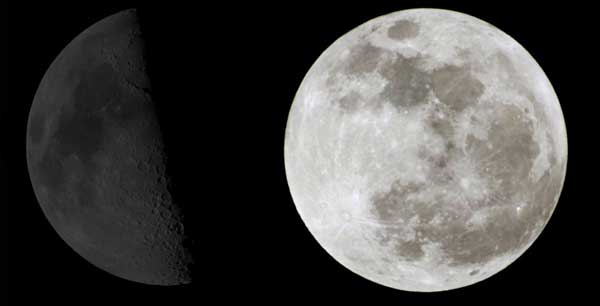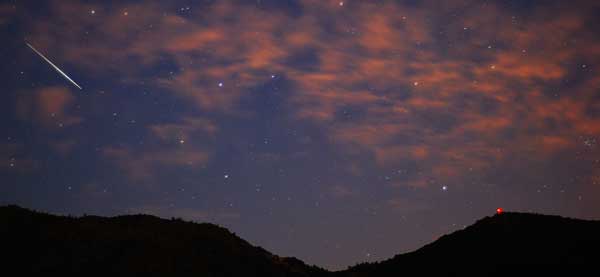 Like many other children, when I was about 8 years old, all I wanted to do when I grew up was to be an astronaut, which helps explain why all of my favorite movies have to do with aliens and outer space. My favorite class I get to teach to my High Trails’ students is Astronomy – such a shocker, I know. For this reason, I’ve got for you here a list of ten fun (and some of them terrifying) astronomy facts you may not know.
Like many other children, when I was about 8 years old, all I wanted to do when I grew up was to be an astronaut, which helps explain why all of my favorite movies have to do with aliens and outer space. My favorite class I get to teach to my High Trails’ students is Astronomy – such a shocker, I know. For this reason, I’ve got for you here a list of ten fun (and some of them terrifying) astronomy facts you may not know.
- Almost one million Earths could fit inside the Sun. If the Sun was hollow and filled up with spherical Earths, then around 960,000 would fit inside! But…the Sun will one day be about the size of Earth. Huh? After its red giant phase, the Sun will collapse, retaining its enormous mass, but containing the approximate volume of our planet. When this happens, it will be called a white dwarf.
- The sun and moon look the same size. The Sun is 400 times bigger than the Earth’s moon but the Sun is also about 400 times farther away than our moon, which helps explain why they appear to be the same size. During my Astronomy lesson, I often ask my students, “What’s further away, the moon or the Sun?” Usually, I receive blank stares or confused looks, but most who are brave enough to answer will guess that they’re the same distance away. Understanding how much farther away the sun is can help understand how far sun energy has to travel through space just to keep life on our planet going.
- Only half of one billionth of the energy released by the Sun reaches Earth. This is actually something that even surprised me, because I know that not all of the energy that reaches Earth even gets past our Atmosphere – some of it gets reflected back into outer space.

- 90-99% of all normal matter in the universe is Hydrogen. Hydrogen is a huge building block in our universe – it’s the first substance in our periodic table, it’s prevalent in water, and the most common element in the universe. Not to mention that it makes up around 70 % of our sun.
 Helium is the only substance in the universe that cannot be in solid form. Around 29% of our sun is made from helium. Around 99% of birthday balloons are filled with this same gas.
Helium is the only substance in the universe that cannot be in solid form. Around 29% of our sun is made from helium. Around 99% of birthday balloons are filled with this same gas.- One year on Mercury is less than two days on Earth. If I’ve learned anything from the phrase “My Very Educated Mother Just Served Us Noodles,” which can help students learn the order of the planets from the Sun, it’s that Mercury is the closest planet to the Sun. This means that it takes the least amount of time out of any planet in our Solar System for it to travel around the Sun, contrasting Neptune which takes the longest. Unlike Earth, which takes about 365.25 “Earth Days” for Earth to revolve around the Sun, it takes Mercury less than two “Mercury Days” for it to revolve around the sun.
- All of the planets are the same age – a little over 4.6 billion years old. The current hypothesis, dated 1755, states that our solar system was formed from a gaseous cloud called a solar nebula.

- Full moons shine nine times brighter than a half moon. The full moon is so bright that it obscures other objects in the sky, this causes many astronomers to put their telescopes away until the full moon subsides.
- Every year, Earth’s Moon is moving away from Earth by almost four centimeters. It doesn’t seem like much but since it first started revolving around the Earth four billion years ago, that’s about 16 billion centimeters – almost 100,000 miles! Eventually, the moon will probably reach a point where it won’t be in Earth’s gravitational pull anymore and we’ll be left moonless; surfers will be totally bummed, dude
- Of the 20 million meteors that are observable every day, only one or two reach the surface of the Earth. A “shooting star” is what we like to call meteors. The meteors that don’t fully burn up (that’s why you see them!) in our atmosphere and reach our Earth’s surface are known as meteorites.
Every week I teach Astronomy, my students see my passion for the subject and we really get into some pretty deep conversations about planets, stars, and yes, sometimes even aliens. I try to motivate them to at least discuss these topics with their friends and family when they get home, sharing my passion for the topic. Hopefully, this will spark an interest and a certain respect for that vast unknown beyond our atmosphere.
Here’s the site where I got much of this information: http://astroceanomy.com/2011/03/04/50-amazing-and-strange-astronomy-facts/

At High Trails Outdoor Science School, we literally force our instructors to write about elementary outdoor education, teaching outside, learning outside, our dirty classroom (the forest…gosh), environmental science, outdoor science, and all other tree hugging student and kid loving things that keep us engaged, passionate, driven, loving our job, digging our life, and spreading the word to anyone whose attention we can hold for long enough to actually make it through reading this entire sentence. Whew…. www.dirtyclassroom.com

Comments are closed.